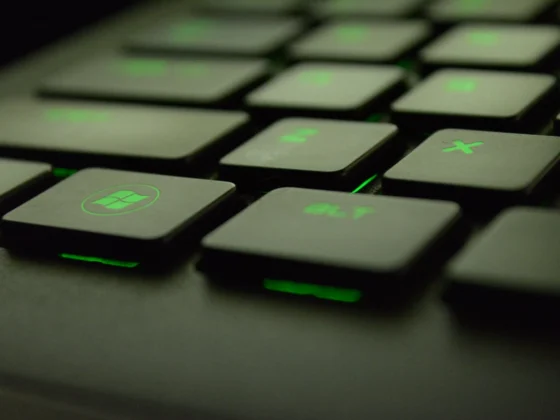There are a few reasons why your Bluetooth headphones may sound muffled. One is that the battery life has run out, and you need to recharge them before they can be used again. Another reason is that the speakers on your phone may be damaged or broken. If none of these seem to be the issue, it’s possible that you have a faulty Bluetooth device.
Bluetooth headphones are a type of wireless headphone. They use radio waves to transmit audio signals from the source device to the receiving device. Since these devices work with radio waves, they can be affected by obstructions such as walls or other objects that block the signal.
I can’t express how aggravating it is to sit down to rest just to put on my headphones and hear practically nothing.
I paid for high-quality audio so I could listen to music and watch movies, and I want to have the same experience when I retire for the night.
Regrettably, getting enraged does not fix the issue.
It’s too costly to replace my headphones.
As a result, I set out to discover a method to resurrect them.
I discovered methods to deal with a few causes behind muted audio after a little research and inspection of my Bluetooth headphones. While they aren’t choices for repairing blown or damaged speakers, they may be just what you need.
What’s the Deal With My Bluetooth Headphones Being Muffled?
When Bluetooth headphones are exposed to dampness, build up too much dirt in the speakers, have defective wireless connections, or receive music from a bad source, they may create muffled sounds.
The majority of these issues are solvable. You just need to conduct a quick examination to figure out what occurred.
In the next sections, I’ll show you how to accomplish exactly that.
First, I’ll go through what could be causing your audio issue.
If these seem familiar, you may go to the next step and test out the solution.
I can’t promise that this guide will fix the problem, but it may.
How to Troubleshoot Bluetooth Headphone Issues
There isn’t just one factor that may cause muted audio in your headphones.
So, before we attempt to fix the issue, you’ll need to be able to figure out what went wrong.
Pick up your headphones and examine them thoroughly.
Any discolorations, residue, or anything out of the usual should be noted.
When you’re finished, compare what you’ve discovered to the reasons listed below.
What Are the Causes of Muffled Audio?
Moisture
Rain, spilt beverages, putting your headphones in a puddle or lake, and extreme humidity are just a few of the numerous ways your headphones may be exposed to moisture.
Excessive exposure to the sun may cause your headphones to break down and possibly cause irreversible harm.
Water damage to headphones without the owner’s awareness is very uncommon.
Debris
Dust, grit, earwax, and other particles accumulate in headphones and earbuds over time.
Due to earwax buildup in front of the speaker grid, earbuds are particularly vulnerable to muted audio.
It produces a sound-dampening barrier in the literal sense.
Fortunately, it’s a simple remedy, although a bit disgusting.
Wireless Connection Issues
Low-quality audio pass through or incorrect connections may be caused by proprietary driver issues with either the headphones or the device they’re connected to.
This is a bit more difficult to notice, but it isn’t too difficult to correct.
Whether you’re not sure if the drivers are the problem, it’s not a bad idea to replace or update them anyhow.
Source of sound
It’s good news.
If you have a poor audio source, your headphones will suffice.
Simply change what you’re listening to or seeing, and your issue will be resolved.
Audio files don’t always make it through compression and file transmission protocols.
How to Remedy It
Let’s repair it now that we’ve figured out what’s causing your problem.
If the damage isn’t too severe, one of the quick solutions listed below should solve the issue and get you back to watching movies, listening to music, and playing video games in no time.
Moisture Damage Repair
You’ll need 91 percent isopropyl alcohol, a towel, and a bowl of rice to begin.
First, use the alcohol to wreak havoc on the fabric.
Then use the towel to clean the parts of the headphones that have been exposed to moisture.
Make an effort to be comprehensive.
To dry the headset, place it in a bowl of rice for at least 12 hours.
I’ve discovered that gadgets that have been immersed in water for an extended period of time may take up to two days to dry out.
After the drying time has passed, give them a try.
It may need to dry longer if the sound has improved but there is still a little muffle.
Repeat the procedure until all water residue has been removed from the headphones.
Headphones that are filthy
You’ll need paper wipes, a paper clip, and tape to remove earwax and dirt from your headphones.
- Wipe away any big debris accumulations using the towel.
- Attach a piece of tape to the paper clip by folding it in half so that both sides are sticky.
- Rub the tape’s stickiness against hard-to-reach trash with the paper clip.
- Repeat until the area is clean.
Connection Error
If your Bluetooth headphones aren’t staying connected, there are a few things you may do to solve the problem.
- Make sure your drivers are up to date. (Software upgrades for certain Bluetooth headphones are accessible through an application or a website.)
- Bluetooth connection must be reset. (When Bluetooth earphones attempt to connect to each other and the device, things may go wrong.) To clear the memory on your headphones, use the reset procedure and attempt connecting again.)
- On your phone, computer, or tablet, turn on the Bluetooth module. (Try turning off Bluetooth for approximately 15 seconds.) Then turn it back on and attach it.)
When connected to a Windows PC, the audio is muffled.
Proprietary drivers or poor sound equalization are often the blame for muffled audio on Windows devices.
Simply connect your headphones to your PC and search for the most recent drivers on the manufacturer’s website.
Running a “Check for updates” in the Windows System Settings is also a good idea.
Microsoft’s audio driver implementation may be the culprit in rare cases.
You’ll need to fiddle with your system’s Sound Settings to adjust your PC’s equalization.
Begin by right-clicking on the taskbar’s ‘Speaker’ icon.
Then choose “Open Sound Settings” from the drop-down menu. Then choose the “Enhancements” option.
You’ll find all of your headphones’ equalization settings here.
If the sound is already muffled, these effects are likely to cause audio distortions.
Start by turning off all sound effects.
There’s also a 24-bit quality setting.
Return to the Sound Settings screen.
Then, for your headphones, choose “Device properties.”
Click the “additional device properties” option on the right side of the screen.
Go to the “Advanced” tab in the newly created window.
Select 24-bit audio from the drop-down menu.
If it doesn’t fix the issue right away, you may always use Windows Troubleshoot.
To do so, follow these steps:
- Select the ‘Settings’ icon from the start menu.
- Then choose “Update & Security” from the drop-down menu.
- Select the ‘Troubleshoot’ option on the left-hand side.
- Select “Audio Playing” from the drop-down menu.
Windows will then attempt to resolve the issues on its own.
With any hope, everything will be up and running in no time.
How to Resolve Connection Problems on a Mac
When it comes to troubleshooting connections, the Mac offers fewer choices.
“Have you tried turning it on and off again?” is the first and most tested technique. From the System Preferences menu, choose Bluetooth controls.
Turn off your Bluetooth. Allow fifteen seconds to pass.
After that, turn it back on.
Resetting the Bluetooth headphones is also a good idea at this time.
If it still won’t connect, it’s possible it’s attempting to utilize the incorrect audio codec for your device.
Here’s what you can do to make sure it doesn’t happen:
- Select Apple from the menu bar.
- Select “System Preferences” from the drop-down menu.
- Select “Security & Privacy” from the drop-down menu.
- Examine the applications that have access to your microphone.
- Then shut them.
Your Mac should no longer recognize your headphones as a microphone as a result of this.
If it doesn’t, you’ll probably have to compel your Mac to accept your authority.
It’s time to get “Tooth Fairy” on your computer.
For your headphones, this program will compel your Mac to utilize AAC audio codecs.
Conclusion
Muffled audio isn’t an all-too-common issue with Bluetooth headphones.
Thank you, God! However, if you encounter this problem, your headphones aren’t yet finished.
Try to figure out what’s causing your issue.
It may be software drivers, accumulated dirt, water damage, or just a faulty MP3 file.
Hopefully, you’ll be able to utilize this guide to help you get through the difficult portions.
If you’ve exhausted all other options, it’s time to start searching for a new set of headphones.
But don’t quit up too soon.
To check whether there’s a change, try disconnecting your headphones or pairing them with another device.
Bluetooth headphones of good quality aren’t cheap.
Make sure you get the most out of your time with them.
If you are experiencing muffled sound from your Bluetooth headphones, it could be because of a low battery. To fix the issue, try charging them for a few hours before using them again. Reference: why do my wireless headphones sound muffled.
Frequently Asked Questions
How do I fix the sound quality on my Bluetooth headphones?
The best way to fix the sound quality on your Bluetooth headphones is to turn them off and then back on again.
Why do my Bluetooth earbuds sound muffled?
This may be due to a number of factors. One is that you might have turned the volume down on your device, which would cause the sound to be muffled. Another factor could be that you are not using Bluetooth earbuds with an in-line microphone and its possible that the mic isnt picking up your voice as well as it should.
Why does my wireless headset sound muffled?
This is likely due to the fact that you are using a wireless headset. Wireless headsets typically have lower sound quality than wired headsets, which can make the sound seem muffled.



